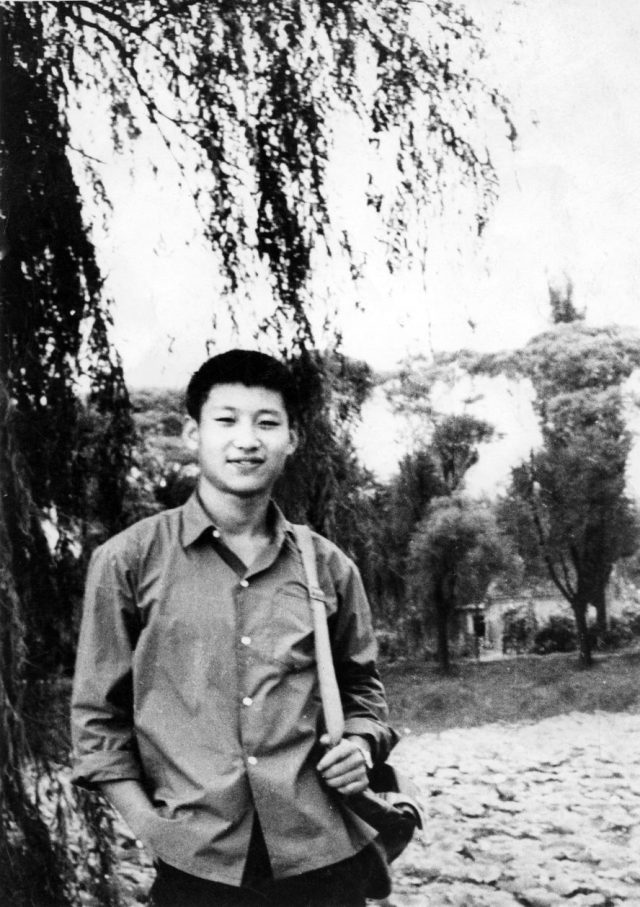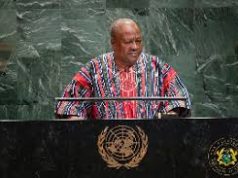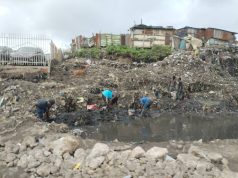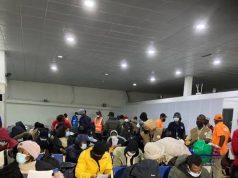From Ikenna Emewu, in Shaanxi
It was just one of the days of trips in central China towards the west.
The mission was to visit the location where the Chinese Communist Party (CCP) flourished and consolidated for 13 years between 1935 and 1948 before it won the contest to be the ruling party in 1949.
The party has remained in power till now and is about to celebrate its 95 years of formation since 1921. The CCP came to existence through the influence of the Union of Soviet Socialist Republic (USSR) Bolshevik Revolution of about 1919.
To trace the roots that has developed China beyond imagination, Daily Sun visited Yan an, in the Shaanxi Province in central China last week.
The story of the party is an inspiration, especially for someone from Nigeria where political parties don’t seem to have any clear agenda of moving the richly endowed country in the right direction.
But the visit proved more than interesting because apart from the leaders of the party living in the valley city surrounded by high mountains, including Chairman Mao Zedong whom Daily Sun also visited his office hewn into the mountain wall like a cave, it was an opportunity to see someone that knew President Xi Jinping so well some 42 years ago.
Very close to Yan’an, about 60km away, is Yanchuan. There, President Xi at the age of 16 was sent to work as secretary of the party in 1974.
When the young man whom the town credits for bringing them the first factory and later electricity in 1988, worked there, none of them imagined he could rise that high to lead the world’s largest country.
The quiet town of 1186 people made of 364 households is today a cynosure, as the office where President Xi worked is today a museum to document the leader’s history and the party he belongs to.
Photos of President Xi then and now adorned the museum. One of them is a group photo where he was seated with some other leaders of the party. President Xi is actually from Shaanxi Province, but not this town.
This part of China has a peculiar architecture called yaodong. The tour guide described the structure as having no English language equivalent but something close to a cave. Because of the mountainous nature of the whole region, they simply fuse their buildings to the wall of the mountains that serve as the wall of the building. It is like a shallow tunnel dug into the mountain where the door is an arch, and the space of the building reaches into the mountain wall. With the arrangement, the top or ceiling of the building is decked today with concrete, forming a semicircular arch as the rest of the roof is actually the body of the mountain. That saves them building materials and money and also the cave-like nature has an advantage during the bitter winter of the area when the mountains are totally covered with snow. It was in such a cave that President Xi lived and worked. In fact, the relic of Mao’s office is also that same structure. Yaodong is the trademark of the area.
Directly opposite the former office of Mr. President is a humble yaodong and one of the 364 family homes. The home looks big compared with many others with a restaurant and small grocery shop fused to the west end of it.
It is the home of a man of importance and news although many don’t know him. It was happenstance that I engaged the old man who owns the home in a discussion that later turned important. The 77-year-old Pa Shi Yuxin is someone who knows President Xi so well. When the young man worked in that party office, Pa Shi was one of the leaders there. Before Xi came, Pa Shi had been the party chief of Yanchuan in 1969.
In an interaction with him, as host of many of the visitors who were there to see what a yaodong home looks like, Shi revealed that he worked with President Xi in the office then and had fond memories of the man he said was a devoted worker, but with nothing so extraordinary to show he was going to be the leader of the country.
“Oh, I remember him so well. We worked with him then, which is why we were all happy when he became president of China. When he was here, he was the one who attracted government attention to build us a factory that processed agricultural output. Later in 1988, his efforts also brought electricity to this town. Even now he is in power, he has been here.
“I remember him as a tall young man who was so hardworking and devoted to the party. He was a very nice man; we still remember his impact on us. Then nobody would have imagined he would be the leader of the country. But he was quite polite and well-mannered,” Pa Shi narrated in gladness.
Asked if he met the president in 2015 when he visited, Pa Shi’s old and dimming eyes brightened up and he said: “Yes when he visited last year I was with him. He even still remembered me and called me by my name. He has a good memory. We really wish him well in the leadership of China because he is one of us.”
Pa Shi, an avid smoker, who reeked of leftover stench of an earlier smoking bout still had a stick of cigarette stuck to the top of his right ear the way a carpenter holds his pencil. The stick was definitely the next victim of Pa Shi’s furnace. But during the discussion, he had to spare the tobacco and discuss his old contemporary to the visitors and he was really elated to tell the story of a successful kinsman and noted that his rise to power had been a blessing and benefit to the community, especially the popularity that brings people from all over the world to visit the museum.
Culled from my report of July 2016










